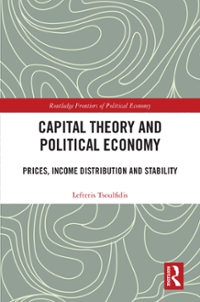Question
3. The Ricardian Model (chapter 3) We continue with the story of exercise 1 and 2. Draw a new graph with Relative Quantity of Apples
3. The Ricardian Model (chapter 3) We continue with the story of exercise 1 and 2. Draw a new graph with Relative Quantity of Apples on the horizontal Axis and Relative Price of Apples on the vertical axis, with the Relative Supply Curve of exercise 2, but now add the relative demand curve. The relative demand curve, which describes a relation between the relative price and relative quantity is specified as follows: ???????? ?? ?????? ???????? ???????? ?? ??????? ???????? = ????? ?? ??????? ????? ?? ?????? (a) Graph the Relative Demand Curve and the Relative Supply Curve. (b) Determine the Equilibrium Relative Price of Apples. Indicate it in the graph. Explain. (c) Describe the pattern of production (who produces what) and the pattern of international trade (who exports what, who imports what)? (d) Explain in detail that (and how) both countries gain from international trade.
(I have answers to question 1 and 2, i just put them in the attachment for reference, the question i want answered is question 3)

Step by Step Solution
There are 3 Steps involved in it
Step: 1

Get Instant Access to Expert-Tailored Solutions
See step-by-step solutions with expert insights and AI powered tools for academic success
Step: 2

Step: 3

Ace Your Homework with AI
Get the answers you need in no time with our AI-driven, step-by-step assistance
Get Started


